You’re probably not unfamiliar with the fact that video content has skyrocketed in popularity over the last couple of years.
And social media video isn’t any different.
Chances are, that’s exactly why you’re here.
But the thing is, anyone can record a video on their phone and upload it to social media. In marketing, what truly matters is how you can create kick-ass marketing videos and upload social media video that drives engagement and incredible results.
Videos are playing a greater and greater importance on social media, and as a brand and marketer, you obviously want to take advantage of the increased interest and increased social media video consumption.
In fact, when was the last time you watched a video on social media?
If I’d asked you that question five years ago, the answer would have been completely different.
We all wish that we could create engaging videos, share them on social media, and go viral, just like Dollar Shave Club, which then later purchased by Unilever for $1B.
Unfortunately, there is no secret recipe that ensures going viral all the time.
There are so many more factors that play a part.
But the foundation for going viral, in fact, even for just driving great results with social media video, is actually having a great video.
Secondly, you need to know how you’re going to distribute it and give it the best possible preconditions to succeed.
Now, I know that all of this might seem complicated, but at the end of this post, you’ll be a social media video guru that can go out and create engaging videos on social media that actually drive results.
Ready to dig in?
Let’s go.
Why social media video?
If you’ve been somewhat updated with what is happening in the social media landscape and on the web you have probably not missed the increase in popularity and demand for social media video.
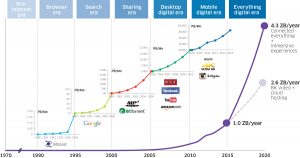
As a brand, you always want to provide your audience with what they are asking for, and right now, they’re screaming for video.
The best part is that the reason you should do social media video isn’t just that your audience is asking for it.
In fact, it can also help you drive better results.
We’ve all heard the saying ”a picture says more than a thousand words”, but what does a video say, then?
A video is often filmed in 60 fps, which means that it displays 60 photos per seconds.
You probably already know where I am going with this, but with video, you’re able to impact your audience so much deeper than with text, and this is great news in marketing.
Now, that video has increased in popularity isn’t assumptions.
It’s cold hard facts.
In fact, Over 8 billion videos, or 100 million hours of videos are watched on Facebook every day, according to Techcrunch, and 83% of marketers said they’d create more video content if there were no obstacles like time, resources, and budget, according to Buffer.
What’s more, many of the social media platforms have introduced new updates to their platforms that are focused on video to meet the increasing demand. Instagram and Facebook, for example, have both introduced live video, and Instagram, which previously didn’t allow video content, now sees that a lot of the content being shared on the platform is just videos.
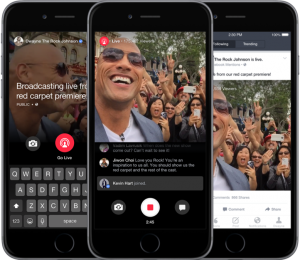
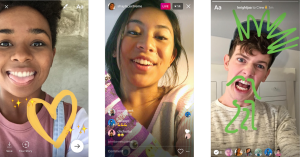
But with the increased interest and demand for video on social media, you stand in front of two challenges.
The first challenge is learning the recipe for creating interesting videos that get your audience engaged.
And the other challenge is learning how you distribute the videos on social media to give them the best possible preconditions to perform well.
In order to master those challenges, you need first need to understand that all social media platforms are different.
Then, you need to develop your own social media video strategy which tells you everything you need to know about executing a successful video strategy on social media.
The best part is that if you follow this guide, you’ll have a finished social media video strategy at the end of it.
Why social media video?
When it comes to showcasing your brand’s products, your brand’s culture, and team, video is the best way to do it.
Since video clearly says more than a thousand words, it is a lot easier to mediate the message you want to send to your audience and get your point across.
And compared to other types of content, people are more likely to watch your videos. In fact, 80% of all web traffic is projected to be video-based by 2021. That’s quite extraordinary.
Safe to say, if you aren’t implementing social media video into your strategy, you are going to be missing out.
With all of this in mind, it does maybe not come as a very big surprise that video has the highest ROI of any type of content.
The good news….
This is the part that really gets me fired up.
If you were an adult 20 years ago, you know just how expensive photo and video equipment was.
In order to create average quality videos, you had to buy super expensive camera equipment, a studio, expensive editing software, and more.
And worst of all, the cost of distribution was insanely expensive.
Now?
Distribution is free.
20 years ago, no-one would have believed it.
What’s more, today, you can create high-quality videos with your phone!
No-one would have believed that either 20 years ago!
The video content creation and distribution has been opened up for virtually everyone, no matter what knowledge or expertise, or economic capabilities.
With all of this potential with social media video, do you really want to be missing out?
Let’s dig into the practical parts of social media video, and how you can succeed with it.
What social media platforms should you choose for social media video?
When it comes to social media video, the question that almost always gets asked by marketers and brands that are new to social media is “which social media platform should I use?”.
And the answer to that question is, to a large extent the same as to the question ”which social media platform should I use?”.
Obviously, if you’ve been using a social media platform for a while, you’ve probably built a somewhat of a presence on that platform, and therefore, you want to be leveraging that presence and audience.
It’s a lot harder to gain traction when you’re starting from scratch than when you’re starting with a little bit of momentum.
The catch, however, is that not all social media platforms support video. Fortunately, the vast majority of them do.
If you’re contemplating which platforms you should be using for your social media video, YouTube is almost always among the answers.
And that’s not very surprising, really.
YouTube is the world’s largest video-sharing platform in the world, with over 400 hours worth of video being uploaded every day.
Let’s look at the top social media platforms and how you can best succeed with video content:
Social media video: Facebook
When talking about social media, whether it be video, photo, or anything else, it’s hard to neglect Facebook, the world’s largest social media platform.
In recent years, Facebook has started to focus more and more on video content and introducing new updates that make it easier for its user to create and share video.
Moreover, Facebook’s goal is to dominate the social media landscape, but it isn’t yet dominating the video section, since there’s YouTube, so what Facebook has done, apart from introducing a number of new videos features such as stories, live video, and Facebook watch, is it has tweaked its algorithm to favour people who upload video content.
This means that when you upload videos to Facebook, you’ll generate a great organic reach, and this will encourage more people to upload videos to Facebook.
In the long run, and according to Facebook’s plan, it also means that fewer people will upload videos to Youtube and instead focus on Facebook since it offers a better organic reach.
The fact that video content sees a higher organic reach on Facebook than regular posts does is obviously great news because it means that you’ll be able to gain traction faster.
But if you ask me about if you should choose YouTube or Facebook, I say why choose?
Facebook is an amazing social media platform for video content, and that is because it offers so many opportunities when it comes to the video you’re creating and uploading.
If you want to solely do live video, then do live video. If you want to do sketches, then do sketches.
Facebook allows you to focus on the type of video you’re best at, and this is great news.
Facebook live
If you’ve ever been the person who asks ”what’s the next trend of social media?” ”What’s the next trend of Facebook?”, the answers are Video on Facebook, and Facebook live.
Facebook live has skyrocketed in popularity since it was launched on April 6th, 2016.
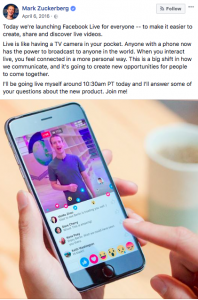
And the best part is that there aren’t just regular people using it, but marketers and brands have also realized the immense potential that lies in live video, and so implemented it into their Facebook strategy.
Facebook live video, and live video on all social media platforms that support it for that matter, is seeing an increase in popularity since it allows the broadcaster to engage and interact with their audience in real-time, ask questions, and answer questions, and get live feedback.
A study found that live video viewers tend to stick around three times longer than traditional video content, and that’s because of the engaging nature of live video.
As a marketer, this is something that you want to pay great attention to, because it comes with tremendous opportunities for building strong relationships with your audience, and boost your engagement.
Many of the top brands have leveraged Facebook live in one way or another because they have realized the immense potential that’s in it.
Sephora and General electrics are just two examples of brands that leverage live video on Facebook.


There are a million opportunities with Facebook live, with everything from live reporting from a news scene, streaming a product launch, live streaming an event, and much more.
The tool itself is great, but it’s how you decide to use it that’s the interesting part.
When it comes to live video, far too many brands are terrified that the video is too raw and not edited to perfection. What’s more, since it is live video, things can go wrong, and everyone will be able to see it.
But the brands that have embraced live video have never seen this as a problem.
Instead, they have seen live video as a way to humanize their brand, and build better relationships with their audience, and that’s exactly what Facebook live video has proven itself able to help them do.
The benefits of Facebook live are many:
- It allows you to interact with your audience at the moment
- It is virtually free, all you need is a smartphone and internet
- It allows you to humanize your brand and bridge the gap between your brand and audience by not only sharing content that’s polished to perfection and has lost its personality
- Allows you to build stronger and deeper relationships with your audience.
The best part about Facebook live is that you’ll have the live video even after the broadcasting is over. This means that you can continue gaining marketing results from it long after you recorded it.
In fact, the live video from Sephora is over one year old.
Regular videos on Facebook
We should remember that while live video has skyrocketed in popularity, Facebook watch is still the most important video feature on Facebook.
This is just the regular video uploading on feature which you can use to share videos with your audience by simply uploading it.
The best part is that the interest in regular video on Facebook is increasingly very high, and more than 100 million hours of video are watched every single day.
This leaves you with great opportunities to drive amazing results with prerecorded video, too.
The video on Facebook is automatically-playing and has proven to be more effective in getting people to hold up for a while and watch, rather than continue scrolling.
Want to hear the best part? Today, one of Facebook’s algorithm ranking factors is time spent viewing someone’s posts, and since video content is more effective in getting people to stay, sharing video content on Facebook will help you rank better in your followers’ feeds, and thus drive better results.
You should have in mind, though, that while the videos on Facebook autoplay, they will do so without sound – until you activate it, so ideally, you should be creating videos where you can get your message through without being heavily dependent on the audio.
Pay attention to this when it comes to Facebook video
There are two ways to share videos on Facebook.
The first is to upload them natively onto the platform, and the other is to link them in a post of yours. There are a number of outside video hosts where you can display your video in your newsfeed. The best method to share videos on Facebook to give them the highest possible reach is by uploading them natively onto Facebook, and here’s why:
Facebook doesn’t want their users to leave the platform, but rather stay onto it for as long as possible.
This means that they will favor posts which have uploaded videos natively to the platform rather than linking to them, with an increased reach from the algorithm.
Social media video: Twitter
While Twitter isn’t known to be the go-to social media platform for video, it does support video, and you can actually help you drive great results with it.
Since Twitter is a platform that is centered around short and snappy messaging, short teasers are the best type of video for this platform.
It isn’t ideal for longer videos, and so if you want to share those on Twitter, it’s better to leverage Twitter to drive people to your website instead.
A fun and engaging way to use video on Twitter is to create customer videos, like a video reply to people to respond to their questions etc. Doing this is a terrific way to improve your relationships and build deeper and more human connections.
A great thing about Twitter video is that the majority of content being shared on Twitter is text-based, and so by creating and sharing short and snappy videos, you can stand out from the crowd and get people’s attention.
While, ideally, you should be creating short and snappy videos for Twitter, if you succeed in creating videos that grasps your audiences’ attention, you will be able to find great success from longer videos as well.
Because Twitter’s length cap is quite generous, allowing for a maximum of 2 minutes and 20 seconds videos.
When it comes to live video, Twitter shouldn’t be neglected.
In fact, in 2015, Twitter bought the live streaming social platform Periscope. Now, Twitter supports live video via Periscope, but through the Twitter app.
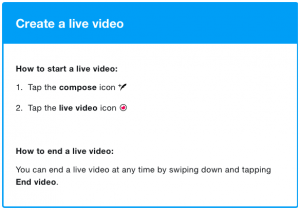

That Twitter now supports live video is not that strange, considering it ”is the place to see what’s happening in the world—from breaking news to major live events.”, and live video is the ultimate way to share the latest news in real-time.
What should you have in mind when creating Twitter video?
When it comes to social media video and more specifically Twitter video in this case, the most important part of successful video content marketing is to listen to the crowds. Fortunately, Adweek conducted a study where they analyzed video content on Twitter to better understand what you need to do to create and share dominating video content.
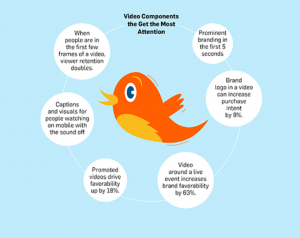
Their findings were this:
Necessary video components to get the most attention:
- Prominent branding in the first 5 seconds
- Brand logo in a video can increase purchase intent by 9%
- Video around alive event increases brand favourability by 63% (not that strange considering Twitter is a news site)
- Promoted videos drive favorability up by 18%
- When people are the first few frames of a video, viewer retention doubles.
- Captions and visuals for people watching on mobile with sound off.
Now, these facts are quite helpful when it comes to designing your video content and thinking about how you’re going to craft it for optimal results, but here’s what’s even more helpful to know:
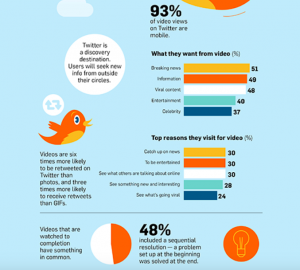
As a brand, you want to give your audience what they want to see, and therefore, knowing what they actually want to see is a good start.
- The study found that:
- 51% want to see videos related to breaking news
- 49% want to see informational videos
- 48% want viral content
- 40% want entertainment
- 57% want celebrity
What exact content you should actually be creating demands some planning and thinking – something that we’ll get more into detail of when we’ll go into the social media video strategy, but while you should take this study’s findings in terms of type of content with a pinch of salt, it is a great starting point.
But probably the most shocking thing about Twitter videos is that they are six times more likely to be retweeted than photos, and three times more likely to receive retweets than GIFs.
Social media video: Instagram
If you haven’t used Instagram for that long, you’ll maybe get chocked by hearing that video hasn’t existed forever on the platform.
In fact, it was in 2013 that video on Instagram was introduced.
But you can bet today, Instagram doesn’t regret their decision, because the video consumption and video creation on the platform are only increasing in popularity.
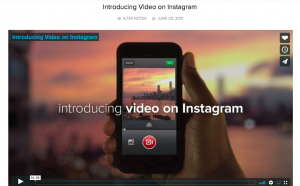

In fact, within the first 24 hours of the launch of Instagram, video, five million videos were uploaded. This number has, of course, only increased since then.
In terms of video, Instagram offers a lot of possibilities for its users.
It offers regular Instagram video, Instagram Stories, and, of course, live video.
The easy access and distribution of video have led to more marketers using it, and many brands have also found it to be able to help them drive amazing results.
The videos on Instagram autoplay when you scroll to them, but they do so without sound, so just like you want to make your videos on Facebook appealing and engaging, even without the sound, you want to do the same thing for videos on Instagram.
When videos on Instagram were launched, they could be a maximum of 15 seconds, but now, the videos can be a maximum of 60 seconds.
For stories, however, they can be a maximum of 10 seconds, and for live video, there is no limit.
Instagram isn’t the social media platform that is known to have the most conversion power, and a part of that is that it doesn’t allow clickable links in posts.
However, Instagram is a great platform for working on things which will ultimately lead to sales and conversions.
You regularly hear me emphasize that social media is a relationship tool, not a promotional tool, and that fits perfectly into Instagram.
Rather than focusing on using social media video and Instagram video to sell, sell, sell, you instead want to leverage it to engage your audience and focus on building your relationship with them.
This is why one of the most effective ways to drive marketing results from your Instagram videos is to create videos that humanize your brand and make you more approachable.
Because by building stronger relationships with your audience, you’ll increase their trust in you.
And when your customers trust you, they’ll be much more likely to buy from you!
On Instagram, you often see brands creating behind-the-scenes content, as well as fun and engaging videos that make people laugh.
These are the types of videos that have proven to be most effective for brands, and so this is the type of video content you should be sharing on Instagram.
When it comes to Instagram Stories and live video, it’s all about behind-the-scenes. Both of those are incredible tools to bridge the gap between you and your audience and make them more engaged in your brand.
When it comes to Instagram ads, you’ll maybe be surprised by hearing that 25% of ads on Instagram are video, despite Instagram initially being a photo-sharing platform only.
Since people’s attention span is quite short on Instagram, short loop videos see great engagement on the platform.
H&M is a brand that regularly creates this type of videos:
Think about this when creating an Instagram video for marketing:
- Be clear, concise, and get to the point. People’s attention span is short.
- Humor works extremely well, but be careful with what you’re joking about since it can backlash.
- Millions of videos are being shared every day, so be unique, and find your own style that aligns with your visual theme
- Use colors that are attention-grabbing and gets the attention of your audience
Avoid sales content, but focus on using social media video to build relationships and engage your audience.
Social media video: LinkedIn
A platform that is often forgotten and neglected is LinkedIn.
That’s both negative and positive because it means that many people are missing out on the great video marketing opportunities, but at the same time, it means incredible opportunities for the brands that actually do leverage it, due to the limited competition.
A reason that LinkedIn is often neglected is that it is relatively new to the video industry, introducing the new video feature on August 22nd, 2017.
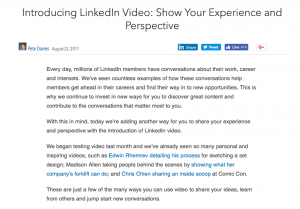

Video on LinkedIn is created to help you do the following:
vity:6305770479856685056″ height=”448″ width=”504″ frameborder=”0″ allowfullscreen=””>
https://www.linkedin.com/feed/update/urn:li:activity:6305770479856685056/
So, therefore, you shouldn’t go about using LinkedIn video for any other reason than the ones listed.
You can record your videos directly from the platform, but you can, of course, also upload previously recorded and edited videos within the platform.
YouTube Video Marketing
It’s quite difficult to talk about social media video and not mention YouTube.
After all, YouTube is the world’s second largest search engine and the world’s largest video sharing platform.
Safe to say, Youtube is dominating the video industry online.
While you can carefully pick and choose among the social media platforms that you believe will be most beneficial for you, YouTube should most definitely be a part of your social media video marketing strategy due to its immense authority in the social media video space.
In case you’re hesitant, let me convince you about YouTube’s immense power with these statistics:
- 300 hours of video are uploaded to YouTube every minute
- Almost 5 billion videos are watched on Youtube every single day
- The total number of hours of video watched on YouTube each month – 3.25 billion.
And those statistics are just scratching on the surface.
YouTube has been able to establish itself as the top video platform partly because the interest and demand for video are continuingly increasing. Plus, YouTube was the online video streaming platform.
When creating a YouTube video, it can be good to know that approximately 20% of the people who start your video will leave after the first 10 seconds. This means that the single most important part of your video is your intro.
If your video isn’t appealing and attention-grabbing, it won’t matter how good your video is after 20 seconds, because many will already have left.
The best part about Youtube videos is that they open up an incredible amount of opportunities for brands to create the type of videos they prefer.
There aren’t a lot of restrictions to which formats your videos should or shouldn’t have, which means you can focus on creating the videos that you are best at creating, and that helps you present your brand in the best possible way.
The types of videos that have proven to be most effective on YouTube, however, are:
- Explainer videos
- Product demos
- How-to’s
- Testimonials
No matter what you do, being too promotional seldom works effectively, because people aren’t on social media because they can’t wait to have ads shoved in their face, but instead, they are on social media to do one of the following:
- Learn how to do something (tutorial)
- Be entertained (humor)
- Learn more about something, for example, your product (in order to compare products and settle for the best).
Now, with that in mind, the single most important thing you need to have in mind when creating YouTube videos, or social media video, in general, is that you bring value with your content.
When you bring value with your content and focus on solving a problem with the content you share, you have a value proposition that will automatically attract people to you.
If you create promotional content, it will be changed roles, where you are the one who chase your audience and try to shove promotion their face.
Plus, when you provide value, you’ll have the leverage due to human reciprocity where we feel the urge to return the favor if someone brings us something of value.
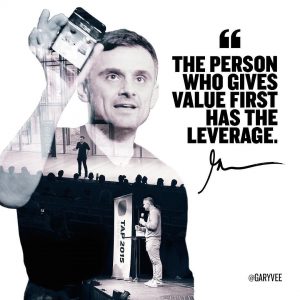
Therefore, the foundation for creating successful YouTube videos is understanding what your target audience is using YouTube for.
Do they want to be entertained?
Do they come there to learn?
When you know that, you’ll be able to craft videos that better speak to them, and which attract more people.
Now that we’ve gone through the basics of social media video, as well as the video basics for the top social media platforms, it’s time to get more practical about how you succeed with social media video, and what tactics you can use to dominate in your industry. Maybe most importantly, look at how amazingly many different ways video can be leveraged in your overall social media marketing strategy.
Develop a social media video plan
No matter what you do in marketing, you want to have a plan and a strategy for how you’re going to execute in order to drive the best possible results.
Having a social media video plan means making it much easier for you to know what you’re going to do and when you’re going to do it.
Obviously, if you look at the bigger picture, your social media video plan will be a part of your social media content strategy, and so, if you’ve already created a such,
In your social media video plan, you want to answer the following questions:
Who are your target audience – who are the people you want to reach with your video?
What type of video types are you going to create? Which types of videos will your target audience best resonate with?
- What channels are you going to distribute your video on?
- What are you hoping to achieve by creating and distributing social media video?
- How will you measure the success of your social media videos?
When you’ve defined your social media video plan, it’s time to get into the more practical part of creating the video.
But there are a few things you want to have in mind before and when creating your videos, and these are universal for all social media video types.
Make sure you caption the attention of your audience quickly.
The attention span of humans is very low, and due to the immense access to information that we’re constantly attacked by on social media. This means that on social media, in particular, we’re very selective with the content we consume, and if we lose interest, we’ll abandon it immediately.

Moreover, what you also need to know is that on most social media platforms, the videos are auto-played, so this means that you want to focus on making the first few seconds of your social media videos appealing and engaging so that you encourage people to continue watching.
Make it possible to get the message from your video without sound.
Several social media platforms have auto-playing videos when scrolling past them in their feed, however, they are played without sound, and this means that many of the people who watch your videos will do it without the sound on. Therefore, you want to avoid making the message of your video highly dependent on the sound, instead, you want to make it impactful, even with the sound off.
To make it possible to get the message of the video through, even without sound, some add subtitles.
A study by Digiday found that 85 percent of Facebook videos are played without sound.
Moreover, you should also take advantage of the caption you have at your disposal, with which you can add context to your social media video.
Keep your video’s message simple and clear
Before creating your video, you need to define what it is you are hoping to achieve with your video. Since you’ve already defined this in your social media video plan and strategy, you’ll know what you’re hoping to achieve, and how you’re going to get there.
Craft your social media video
Finally!
We’ve gone through the theory and the tactics of social media video, but now, it’s time to get our hands dirty.
If you’re a beginner who has never recorded a video in your life, don’t worry.
The truth is, your social media videos don’t always have to be polished to perfection and created with a budget of tens of thousands of dollars.
Of course, back in the days, creating and distributing even a low-quality video would cost a lot, but today, you can just pull out your phone, use some tricks to make your video better, edit it using a free video editing program, and then share it on social media.
People actually like to see content from brands on social media that is more raw, behind-the-scenes, and less polished to perfection.
The Reason?
It makes the brand much more relatable, authentic, and human.
All of which are great things you want to strive towards as a brand.
Just look at the very basic social media video by Lay’s that was still able to drive great engagement and results:
With just your phone, you can actually create relatively high-quality videos, which are well up to standards. You don’t need super expensive camera gear to get started, however, once you’ve been crafting videos for a while, and feel like you want to step it up a notch, investing in a better camera is absolutely no bad idea.
The best part is that with very small improvements that don’t need to cost anything, or very little, you can significantly improve the quality of your videos.
The first recommendation is that you use a tripod.
Believe it or not, but using a tripod makes a huge difference in how your social media video is perceived quality-wise. Having a shaky video harms the overall quality of the video, and it harms the viewer experience.
There are very cheap tripods to get from places like eBay and Amazon, and if you are ingenuitive , you can make one yourself.
It’s a small investment that makes a huge difference.
Use a microphone
Like I talked about earlier, you want to try to make the message of the video come through even without sound, but if you are creating videos that are heavily dependent on audio, you need to use a proper microphone.
The differences between just using the built-in microphone in the camera and using an external microphone are huge, and so it is a well-worth investment since it significantly improves the viewer experience.
Have a good location
When recording your video, you want to find a good set for the video that has a great background. Depending on the type of video you are creating, a great idea is to find a monotone background, for example, a wall, and stand in front of that if you’re going to be talking. This ensures that the attention of the viewer is drawn to you, and prevents any distractions in the background.
Find good lighting
Natural light is one of the best light sources for your videos. If you can’t get that, lamps work great, too. When recording your video, be sure to face the light source so that the light spreads evenly across your face.
If you prefer a more advanced light setup, you’ll love this “Lighting on the Fly” guide by Wistia.
What type of social media video should you create?
We’ve covered quite a lot already, including things you should think about when creating your video, and how you can improve the quality of it.
But there are, however, still a number of questions remaining.
The main question that is most often being asked is ”what type of social media video should I create?”, and that’s not very surprising since there are a ton of different types of videos you can choose from.
Just take a look at these three social media videos from three different brands, all of which are completely different from each other in the way they play out:
What type of videos you should be creating is obviously, to a great extent dependent on the objectives you’ve set for your video creating, and what you’re hoping to achieve with them.
For instance, if your goal is to create videos that help humanize your brand, improve your customer relationships, and make you more relatable, your videos should look completely from if your goal with your social media video is to sell, sell, sell.
Here are some of the most common ideas and ways that video is leveraged:
- Spark engagement and build hype for product releases
- Showcase company culture and go behind-the-scenes to build better customer relationships
- Educate your audience on how to do something/how to use your product
- Create a video for your official product launch
- Create teasers
- Share a humorous video that entertains and makes your audience laugh
- Spark engagement and build hype for product releases
You regularly see brands creating videos to build up hype for a new product release.
Just take a look at Rolex’s ”teaser” video before they released a new model:
This video contributed to not only informing their audience about the new release, but it also sparked a ton of engagement and excitement, and people tagging their friends, which meant a huge domino-effect of free exposure for the brand.
Video for official product launches
Now, Rolex received a ton of engagement for its teaser video, but it was nothing compared to the day of the launch.
In fact, on the Instagram post where they released their new watch, they received more than 3K comments.
This is a huge number, considering they only averaged around 300 comments on the posts before.


With an image, you’re limited to a still image, and while an image says more than a thousand words, a video in, let’s say 60 fps says a whole lot more, right.
Through a video, you can showcase your new product more thoroughly, and you can showcase all its fantastic features and design, in order to spark greater engagement and excitement.
Educate about your product
This is one of the most common video types used by brands.
Remember that there are a number of different ways you can educate your audience about your product, and most importantly, do it without coming off as too promotional and sales, which will often lead to people leaving you.
Rather than just standing and talking about your product like a salesman, or woman, you can find other ways to educate about your product, ways that are more fun and engaging and which doesn’t feel like selling, from the perspective of the viewer.
The most classic example of this is obviously Blendtec’s YouTube videos, where they showcase just how powerful their blenders are:
What’s more, Blendtec does it in a fun and engaging way, which is also the reason to why the video series has become so immensely successful.
Show your company culture and behind-the-scenes
Remember that humans build relationships with humans, not some faceless brand and logo. What’s more, when brands are more human and have a personality which we can relate to, we tend to trust them a lot more.
The best part is that you can do all of this with the help of social media video.
There are a number of ways you can display your brand in a more human and authentic way, and one of the most popular is to create behind-the-scenes videos where you showcase your team, your office, your factory, and more.
What this also helps with is make your brand more transparent, and thus also more trustworthy.
How to decide platforms for social media video
We’ve spoken quite a bit about the top social media platforms there are, but soon after, the question of which platform or platforms you should use for your social media video pops up, right?
In the post ”choosing the right social media platform for your business” I give the definite answer to which social media platforms you should choose and how you should choose them, because this question doesn’t just go for social media video, but it is a question that is asked far more than there are answers.
All social media platforms are different, there’s no doubt about that, and so you want to study the things that separate them from each other.
Luckily, some social media platforms can be instantly removed from the equation since they don’t support video, which makes the decision a lot easier, but what’s more, it’s important that you don’t neglect other smaller social platforms, because the truth is, just because it has fewer social media users doesn’t mean that you won’t be able to drive great results from your videos.
The bottom line is that you shouldn’t pick social media platforms based on their user count in first hand, because whether a platform has 100 or 300 million users won’t matter that much.
What matters is if your target audience is to be found there, because those are the people who matter.
When picking social media platforms for your videos, ask yourself these questions:
1. Is my target audience to be found on this platform?
2. Does this platform support the type of video content I want to create/is best at creating
3. Do you already have an established presence on the platform (if so, great! Gaining traction for your videos will be a whole lot easier
Conclusion
Humans are visual creatures, and with an improved infrastructure for sharing video content, improved quality on video cameras, which, are available in our pockets, there’s no reason why social media video will be the next new thing that emerges and becomes the next frontier of content on social media.
In fact, this is a trend that we’re already seeing and not something that people are vaticinating about. It is here, it is real, it is happening, and if you aren’t updating your social media content strategy for social media video, you risk falling behind, as you’re not providing the content people want to consume.

